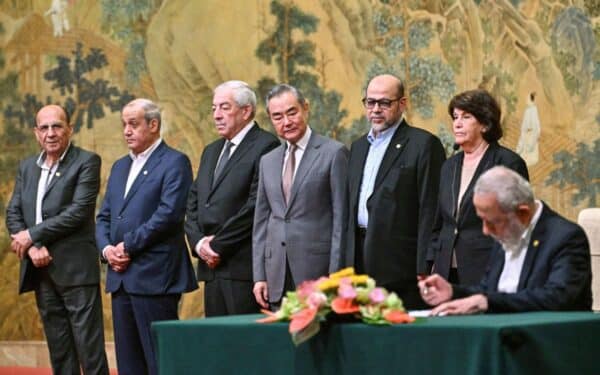Is complete denuclearisation about to happen?
Relations between North and South Korea do seem to be improving, with South Korean President Moon Jae-in declaring the leaders’ joint intent to make the peninsula a ‘land of peace’, and Kim Jong-un similarly described the latest summit as a ‘leap forward’ for peace. The pair are meeting in Pyongyang.
According to Moon, Kim has promised to shut down a number of missile test facilities in the presence of international experts, and has expressed a willingness to shut down the North’s nuclear complex if the US will undertake reciprocal measures.
While this appears positive, it is unlikely Washington will be willing to surrender any aspects of its nuclear arsenal in return and, perhaps more importantly, Kim has not mentioned denuclearisation in his own remarks made at the summit. Recently, talks between the US and North Korea over the prospect of the denuclearisation of the peninsula have achieved little. Despite Trump’s tweet calling the summit “Very exciting!”, it is not clear if it will result in any real progress.
What else was agreed?
The two leaders made moves towards greater unity on the peninsula: they agreed to link rail lines; establish a joint military committee to resolve conflicts, and to remove guard posts from the demilitarised zone. Kim Jong-un also agreed to visit Seoul, the capital of South Korea, in the “near future”, which would make him the first North Korean president to do so. South Korea has agreed to let its citizens visit a tourist region in North Korea for the first time since a tourist was killed there in 2008. Perhaps most excitingly, the two countries are discussing making a joint bid for the 2032 Olympics.
Haven’t there been other inter-Korean summits?
Yes. This is the fifth ever inter-Korean summit, but the third of 2018.
The April 2018 summit was the first in eleven years, and was the first time since the end of the Korean War that a leader of the North entered the South. The meeting dealt with the two countries’ joint attendance of the 2018 Winter Olympics. As a result of the April summit, the Panmunjom Declaration was issued, declaring a ‘new era of peace’ and promoting denuclearisation.
May’s summit was informal, friendly and focused on Kim’s upcoming meeting with Donald Trump. At the end, Kim reaffirmed his support of the Panmunjom Declaration.
This summit, with its rhetoric of peace, greater unity, and denuclearisation, doesn’t seem to deviate too far from the others this year.
What will this summit mean for the future of the peninsula?
The agreement yesterday to build a permanent venue for meetings of families divided by the war is welcome. This year in particular has seen greater move towards a genuine state of peace in the Korea, but relations are still precarious.
The relationship between North Korea and the US is hard to define: denuclearisation promises seem to be ubiquitous, but neither country seems willing to act without some equal move from the other. For the US to give up any of its nuclear power currently seems unlikely, so it is difficult to see how the nuclear aspect of the Panmunjom Declaration will ever be realised.
A former US diplomat and specialist in North Korean-American relations, Mintaro Oba, said: “North Korea continues to outmanoeuvre the United States through its willingness to take initiatives that shape the global public narrative and force Washington to choose between engaging on Pyongyang’s terms or looking like its acting in bad faith.”
He was also sceptical on whether tangible positives in the short term will translate into lasting change: “I think we can expect a two-tiered response where President Trump remains enthusiastic about engaging with Kim Jong-un, but we also see continued scepticism from US officials about both the purported progress on denuclearisation.”
Moon will hold a summit in Washington with President Trump on the 25th September. This meeting is critical for both Korean and US-Korean relations; it will allow Seoul to portray itself as an equal partner and mediator between the US and the North.



